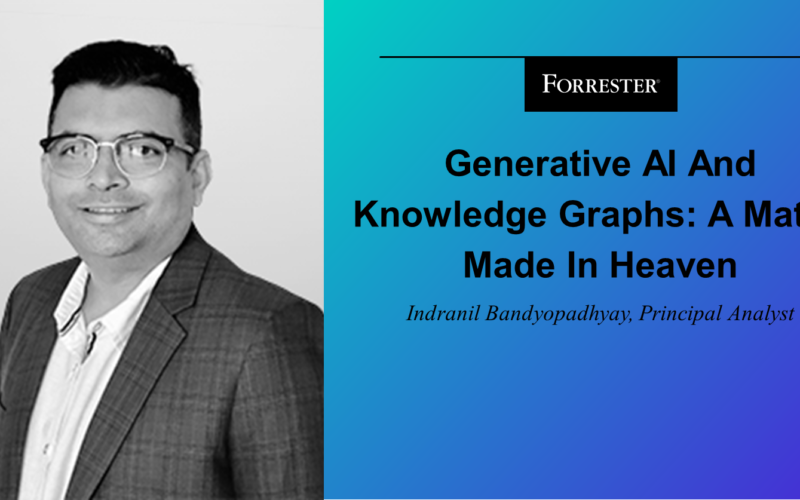In a succession of cases where generative AI (genAI) has developed “coherent nonsense,” the newest is Wimbledon’s “Catch Me Up,” an AI-generated digital publication that provides performance analysis, likelihood-to-win projections, match recaps, and player biographies. It made severe reporting errors, resulting in reader and media complaints. For example, Emma Raducanu, a former US Open winner, was incorrectly labeled as the British No. 1 despite being ranked third. This incident again highlights the challenge of genAI hallucinations and underscores the need for more reliable and accurate genAI systems. This is where Knowledge Graphs come in. Knowledge Graphs (KGs) can enhance genAI’s reliability and accuracy with structured knowledge, domain-specific facts, and reasoning. At the same time, genAI can also augment KGs with textual/visual information, generalized knowledge, and natural language processing. This symbiotic relationship enhances genAI’s (and also KGs’) capabilities and ensures more accurate, relevant, and insightful outputs.
Knowledge Graphs Help Minimize GenAI Hallucinations
KGs are structured representations of information that illustrate the relationships between different concepts. They enable machines to understand and process complex information networks in a way that mimics human reasoning. By organizing data into nodes (entities) and edges (relationships), KGs provide a contextual framework crucial for deep learning models and AI systems, including genAI.
GenAI’s hallucinations result in plausible but erroneous or nonsensical information due to a lack of contextual grounding. KGs give this critical context, ensuring that genAI uses reliable and verified information while creating content. Anchoring genAI outputs to structured and interconnected data in KGs reduces the chance of producing incorrect information. KGs improve genAI’s understanding by disambiguating concepts and offering coherent responses based on interconnected data sources. They ensure the data fed into genAI systems is well-organized and relevant, improving the accuracy of genAI-generated content. Furthermore, the dynamic nature of KGs allows them to be constantly updated with new information, enabling genAI systems to adapt and modify their outputs using the most recent data. This structured framework also facilitates explainability by providing clear reasoning pathways, making it easier to understand and trust gen AI decisions.
GenAI Helps Enhance The Development And Maintenance Of Knowledge Graphs
Building and updating KGs is a labor-intensive process that requires constant data ingestion and structuring. GenAI can automate parts of this process by analyzing large datasets (especially unstructured data) and extracting relevant entities and relationships, thereby populating the KG more efficiently (e.g., GraphRAG). Furthermore, genAI can predict potential connections and suggest new relationships based on patterns in the data, facilitating the continuous growth and enrichment of the KG. GenAI improves the overall data quality within KGs by identifying and correcting inconsistencies. This symbiotic relationship allows KGs to stay current and comprehensive, ultimately feeding back into the genAI systems to enhance their contextual understanding and accuracy further.
The Symbiosis Between GenAI And Knowledge Graphs Can Benefit Many Use Cases
The advantage of such a relationship between genAI and KGs is evident across various practical applications:
- In healthcare, KGs integrate vast amounts of medical research, patient data, and clinical guidelines, enabling genAI to generate accurate diagnoses and personalized treatment plans based on verified information, reducing the risk of hallucinations. At the same time, genAI aids in updating these KGs by analyzing new research and patient records, ensuring that the graphs remain current and comprehensive.
- In customer service, KGs provide a detailed understanding of products, services, and customer interactions. This allows genAI to deliver contextually relevant and accurate responses, thus improving customer satisfaction. GenAI, in turn, helps populate and refine these KGs by extracting and structuring information from diverse customer interactions.
- In content creation, genAI leverages structured data from KGs to produce high-quality, engaging content while predicting new connections and trends to enrich the KG continuously.
This dynamic interplay ensures that genAI and KG continually improve and evolve, driving innovation and efficiency across industries.
Our newly published report, Tech Exec Primer To The Symbiotic Relationship Between Knowledge Graphs And GenAI, illustrates how organizations can take advantage of the symbiotic nature of knowledge graphs and generative AI. It further explains how generative AI and knowledge graphs drive democratization of data insights and analytics within an organization.
Further, our clients can read the report Use Knowledge Graphs To Manage Knowledge Instead Of Data to understand how knowledge graphs provide deeper insights for organizations to solve data-related challenges, enhance customer experience, complement AI capabilities, and detect fraud.
Forrester Can Help You Navigate This Exciting Future
As technology advances and the world changes, industries must adapt, and we at Forrester stand ready to help with a wide range of research on data and AI that can assist you in shaping your future.
Forrester clients can download the report Tech Exec Primer To The Symbiotic Relationship Between Knowledge Graphs And GenAI for our take on successfully leveraging genAI and KG. They can also connect with me through an inquiry or guidance session to discuss how to grow their business with data or AI, or other associated topics.
Source link
lol

